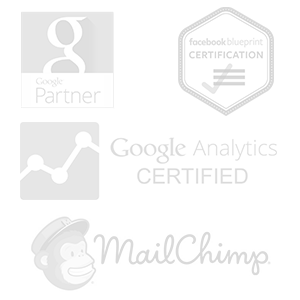“Let’s build a mobile app! It’ll go viral!”
This might make the list of top 10 Marketing refrains of the year. It has all the optimism of “Let’s put on a show! I’ll make the costumes. It’ll be fun!”. But by the latest count there are over 400,000 apps for Apple products alone. Even if you can manage to make it through that jungle of competition and get your target customer to download yours, will they keep using it? A recent study by Localytics, found that 26% of downloaded apps were never used again.
This post shares some tips on how to avoid App failure inspired by a great example I came across.
What Makes A Great App?
Whether it’s a widget, a mobile app or just a micro-site that provides a unique service, for internet marketing success I suggest there are 3 factors that need to be in place:
1. It solves a problem. And no, not a problem that was made-up by hopeful execs in a boardroom but a real problem that your consumer has that you can provide evidence for. Smart marketing detectives will use internet marketing tactics like keyword research and social media monitoring to identify these needs.
2. It builds your brand. No sense doing it unless you can draw a clear, straight line back to your business goals and the core promise of your brand. You know you’ve got it right when you can imagine them saying “Of course, (Your Company) would provide this! Who else?”.
3. It’s a need unmet by others. If you want it to have a long-lasting, sustainable impact, it better be unique or, at least, ownable. As an example, store locators, while often a good service to add onto an app, are by themselves less likely to achieve download success when the need is met by Google Maps and other aggregators.
That’s why I was excited to come across SitorSquat sponsored by Charmin toilet paper.
It solves a very common problem that others have feared to solve – finding nearby clean public toilets – and has been rewarded with over 1 million downloads to date and Charmin toilet paper has gone along for the ride building their brand in a more hip & helpful way than their traditional marketing can. Consequently, it integrates seamlessly into their own campaign and the functionality of the app augments their website.
How Do You Get Started? 3 Tips
1. Begin with the Need. How does your product improve people’s lives if you state it in the widest possible way? Then do your research and find what people are searching for that coincides with that.
2. Free Trial Version First. It’s interesting to note that Charmin didn’t build the app but were smart enough to spot it and then invest early. You can do your own version of this by releasing a bare bones version of your app(s) first in widget form and see if attracts users. Once proven, you can invest more in functionality and level finish.
3. Measure the Hell Out of It. I advise clients to take an 80/20 approach to their marketing mix. Take 80% of your budget and spend it on what you know what works. Take 20% and experiment on fast-growing new media like apps and measure it six ways to Sunday.
Hope this helps. And let’s give Charmin marketers an ‘Atta Boy Bear’.





Love it! Those stats were dead on in the beginning too – I’ve seen that stat on 26% of apps never used again, very interesting. The first two points (solving a problem and building the brand) were great.
I was speaking on mobile web design and Michael, someone from Gartner, spoke before me and talked about his experiences with the GEICO app. He talked about how they’re an insurance company and… well… who “engages” with their insurance company? Who has a positive view of their insurance company? He started talking about how their app and how it allows you to locates roadside service or a taxi, accident help (puts you in touch with emergency services), you can pay GEICO auto insurance bill, etc. He said how all of these practical experiences increased his experiences with the GEICO brand (he was using the app for more than he thought).
He also took it a step further. What if the GEICO app tracked where he was and was able to correlate his travel with things like cars getting stolen? eg. what if GEICO said, “We notice you’re in city XYZ a lot. Be careful, we have reports of stolen cars that match your car” … etc… there is many more possibilities, but I think the idea of increased positive experiences with a brand was a good one.
Great article 🙂